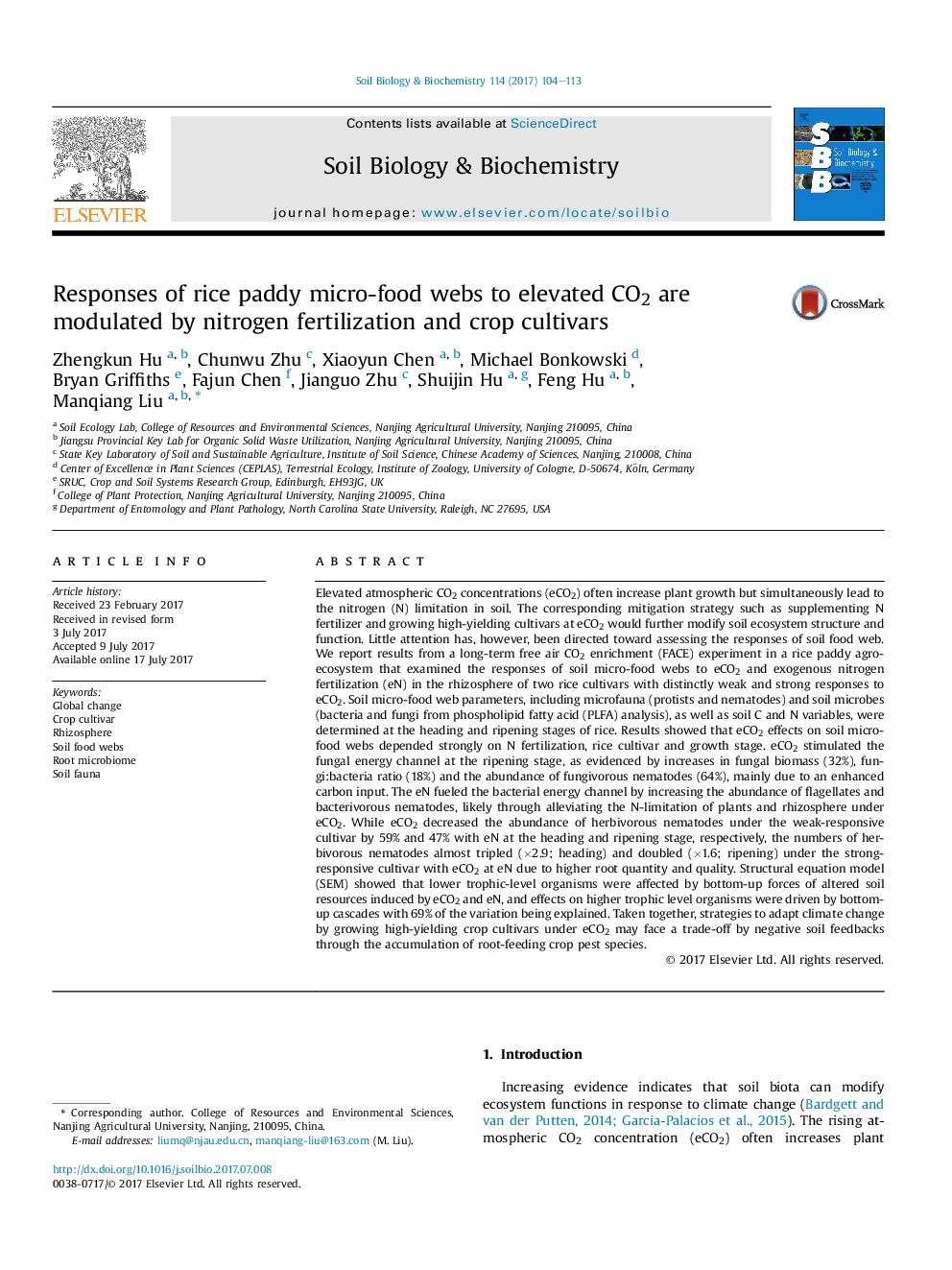| Article ID | Journal | Published Year | Pages | File Type |
|---|---|---|---|---|
| 5516311 | Soil Biology and Biochemistry | 2017 | 10 Pages |
â¢N fertilizer and cultivar mediated the response of soil food webs to elevated CO2.â¢Structural equation model showed bottom-up control via root.â¢Responsive cultivar with higher yield was susceptible to root herbivores.â¢Energy channel shifted from bacteria-based to fungi-based along growth stages.
Elevated atmospheric CO2 concentrations (eCO2) often increase plant growth but simultaneously lead to the nitrogen (N) limitation in soil. The corresponding mitigation strategy such as supplementing N fertilizer and growing high-yielding cultivars at eCO2 would further modify soil ecosystem structure and function. Little attention has, however, been directed toward assessing the responses of soil food web. We report results from a long-term free air CO2 enrichment (FACE) experiment in a rice paddy agroecosystem that examined the responses of soil micro-food webs to eCO2 and exogenous nitrogen fertilization (eN) in the rhizosphere of two rice cultivars with distinctly weak and strong responses to eCO2. Soil micro-food web parameters, including microfauna (protists and nematodes) and soil microbes (bacteria and fungi from phospholipid fatty acid (PLFA) analysis), as well as soil C and N variables, were determined at the heading and ripening stages of rice. Results showed that eCO2 effects on soil micro-food webs depended strongly on N fertilization, rice cultivar and growth stage. eCO2 stimulated the fungal energy channel at the ripening stage, as evidenced by increases in fungal biomass (32%), fungi:bacteria ratio (18%) and the abundance of fungivorous nematodes (64%), mainly due to an enhanced carbon input. The eN fueled the bacterial energy channel by increasing the abundance of flagellates and bacterivorous nematodes, likely through alleviating the N-limitation of plants and rhizosphere under eCO2. While eCO2 decreased the abundance of herbivorous nematodes under the weak-responsive cultivar by 59% and 47% with eN at the heading and ripening stage, respectively, the numbers of herbivorous nematodes almost tripled (Ã2.9; heading) and doubled (Ã1.6; ripening) under the strong-responsive cultivar with eCO2 at eN due to higher root quantity and quality. Structural equation model (SEM) showed that lower trophic-level organisms were affected by bottom-up forces of altered soil resources induced by eCO2 and eN, and effects on higher trophic level organisms were driven by bottom-up cascades with 69% of the variation being explained. Taken together, strategies to adapt climate change by growing high-yielding crop cultivars under eCO2 may face a trade-off by negative soil feedbacks through the accumulation of root-feeding crop pest species.
Graphical abstractDownload high-res image (206KB)Download full-size image
